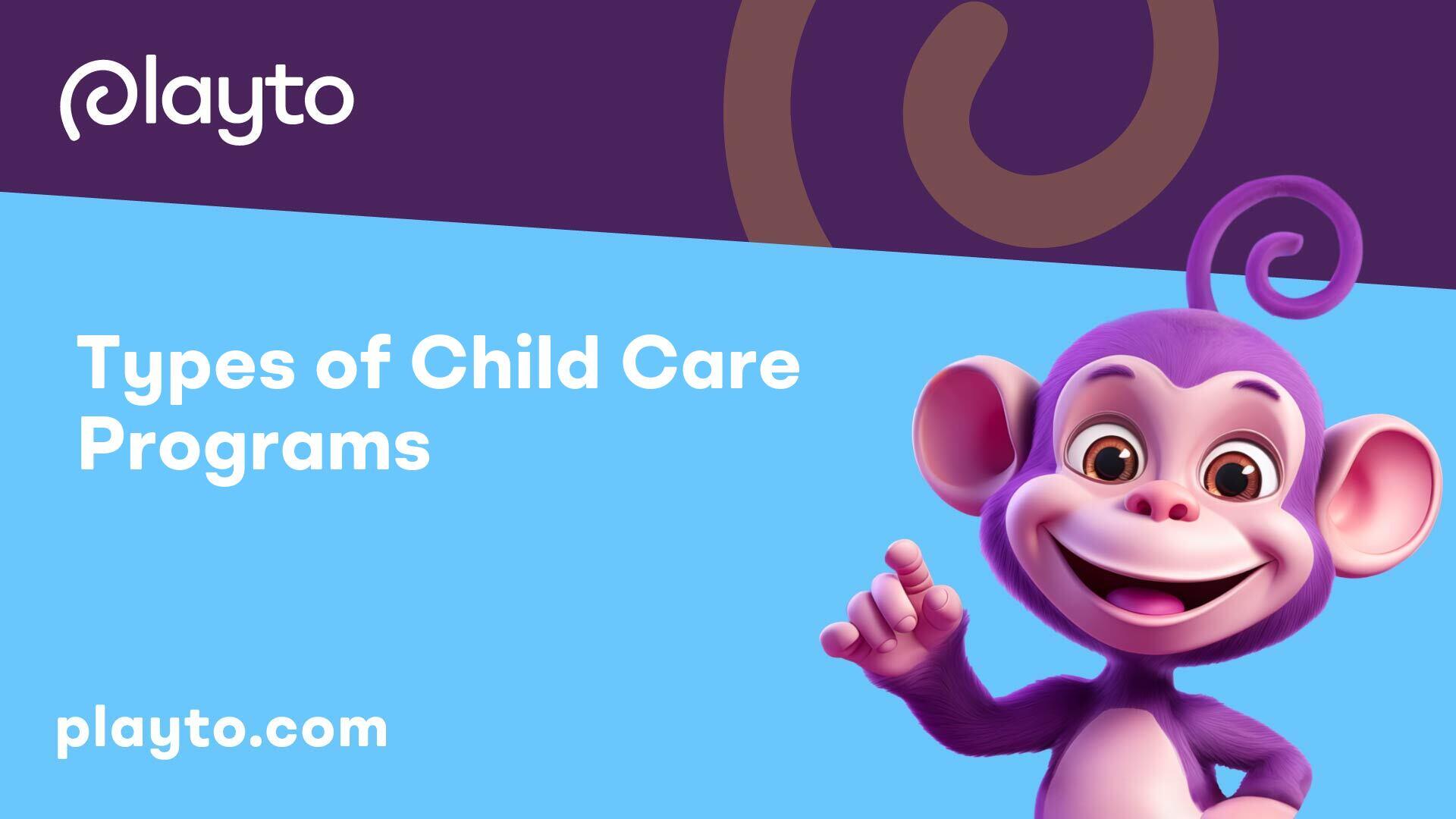
Licensing and Regulations
When it comes to daycare environments, ensuring compliance with child care licensing requirements is paramount. These regulations are established by state and territory governments to set minimum health and safety standards that child care programs must meet to legally operate, safeguarding the well-being of children.
Child Care Licensing Requirements
Licensed child care programs are mandated to adhere to these minimum health and safety prerequisites, guaranteeing that children are nurtured in a safe and healthy environment conducive to growth and learning. State-specific regulations dictate the conditions under which child care providers must operate, ensuring the welfare of children under their care.
Provider Qualifications and Training
In addition to facility requirements, licensed child care providers and their staff must meet specific qualifications and partake in continuous training to deliver appropriate care. This ensures an adequate number of trained adults are present to supervise children safely and support their development and learning journey.
States have the autonomy to determine the criteria for licensing child care providers. The regulations vary significantly among states, covering a subset of providers. Licensing decisions revolve around factors like the number of children a provider can care for before requiring a license. Ensuring compliance with these laws is vital for upholding the safety and well-being of children in daycare settings.
To maintain high standards of care, the National Association for the Education of Young Children recommends specific teacher-child ratios and group sizes. For infants and toddlers, a ratio of 1-to-3 or 1-to-4 is required, with small group sizes of six to eight children. These ratios and group sizes are associated with enhanced safety and more positive caregiving experiences for children in daycare environments [2].
Compliance with child care licensing requirements and the ongoing professional development of providers ensure that daycare environments prioritize the health, safety, and well-rounded development of every child in their care.

Complaint Procedures
Ensuring the safety and quality of child care programs is a top priority for both parents and regulatory authorities. Understanding the complaint procedures in place is essential for addressing any concerns that may arise in daycare environments. This section covers the process of filing complaints and the subsequent review procedures.
Filing Complaints
Licensed child care providers must meet specific qualifications and undergo continuous training to ensure they provide adequate care and supervision to children, supporting their development and learning. If there are worries regarding a licensed child care facility operating unsafely, individuals can file complaints through various channels, including dedicated phone lines or online submissions. These complaints are then thoroughly reviewed by child care licensing staff in each state or territory to investigate any potential violations or concerns regarding the safety and well-being of children.
It is vital to differentiate between licensed and license-exempt child care programs to understand the regulatory oversight and quality standards applied to each type of program. States and territories may exempt certain programs from licensing based on specific criteria, highlighting the importance of distinguishing between licensed, license-exempt, and illegal child care operations [1].
Review Process
Following the submission of a complaint, the review process is initiated to assess the validity of the concerns raised regarding a child care provider's operation. Licensed child care providers must adhere to stringent qualifications and continuous training to guarantee safe supervision and support for the children under their care [1]. Each state or territory's child care licensing staff conducts a thorough review of the complaints received, evaluating compliance with licensing regulations and ensuring the well-being of children in daycare environments.
States retain the autonomy to determine which child care providers require licensing, with each state responsible for setting limits on the number of children a provider can care for before licensing is mandatory. The scope and extent of licensing regulations may vary significantly from state to state, highlighting the diverse landscape of child care oversight across the nation.
Having a clear understanding of the complaint procedures and review process is essential for ensuring the safety, well-being, and quality of child care programs. By actively engaging in these processes, parents, caregivers, and regulatory bodies can collaborate to uphold the highest standards of care in daycare environments and address any issues that may compromise the safety and development of children.

Types of Child Care Programs
When it comes to child care programs, it's essential to understand the distinction between licensed programs and license-exempt programs to ensure the well-being and safety of children in daycare environments.
Licensed Programs
Licensed child care programs are those that adhere to specific regulations and guidelines set forth by state and local authorities. These regulations aim to ensure the safety, health, and well-being of children in daycare settings. Providers in licensed programs must meet certain qualifications and undergo training to ensure they can effectively care for children.
In licensed programs, providers are required to maintain specific standards related to staff-child ratios, health and safety practices, and educational requirements. Parents can have confidence in licensed programs knowing that they operate within a framework that prioritizes the welfare of children. For further guidance on the regulatory requirements for licensed programs, visit the official resources provided by Childcare.gov.
License-Exempt Programs
In contrast, license-exempt child care programs may operate without the same level of oversight and regulation as licensed programs. States and territories may exempt certain child care programs from licensing, such as some center-based and in-home child care providers, under specific criteria.
While not subject to the same licensing requirements, many license-exempt programs still strive to provide quality care for children. However, the lack of formal regulation in license-exempt programs can raise concerns about consistency in care, staff qualifications, and safety measures.
It's crucial for parents to differentiate between licensed and license-exempt child care programs when selecting care for their children. Understanding the licensing status of a daycare facility can provide insight into the level of oversight, standards of care, and safety protocols in place. To further explore the importance of safety in daycare design, read our section on accident prevention and creating secure environments.
Importance of Safety in Daycare Design
Ensuring the safety and well-being of children is paramount in daycare environments. The design of daycare facilities plays a crucial role in accident prevention and creating secure environments.
Accident Prevention
Safety is the foremost consideration when designing daycare facilities, as highlighted by Childcare Renovation. The layout and design of daycare spaces should be meticulously planned to minimize the risk of accidents and injuries. Factors such as proper spacing between furniture, non-slip flooring materials, and secure electrical outlets can contribute to accident prevention.
Proper lighting is essential in daycare classrooms as it not only enhances the visual appeal of the environment but also fosters a positive and productive learning atmosphere. Adequate lighting helps reduce eye strain, fatigue, and creates a conducive setting for children to focus on activities.
Creating Secure Environments
Designing daycare spaces to create secure and hazards-free environments is vital for the well-being of children. Flooring materials play a significant role in safety, comfort, and acoustics within the classroom. Choosing appropriate flooring materials such as carpet or cork can reduce noise levels, absorb sound, and minimize the risk of injuries from slips and falls.
The choice of furniture in daycare classrooms is also critical for ensuring safety and comfort. Age-appropriate and ergonomic furniture not only promotes proper posture but also enhances children's engagement and interaction with the learning space. Ergonomic furniture can reduce discomfort and contribute to effective learning experiences [4].
Incorporating plants into daycare environments can have a positive impact on creating a calming atmosphere. Plants help reduce stress and anxiety in both children and educators, positively influence memory and problem-solving skills, and improve focus on learning tasks [4].
By focusing on accident prevention and creating secure environments in daycare design, facilities can promote a safe and nurturing setting for children to learn and grow. Paying attention to safety considerations and implementing best practices in design can enhance the overall daycare experience for both children and staff.
Designing for Health and Wellness
When it comes to the science of daycare environments, designing daycare facilities with specific features can have a profound impact on the health and well-being of children. Two critical elements to consider in the design process are ventilation and lighting, as well as space utilization.
Ventilation and Lighting
Proper ventilation and adequate natural lighting are essential aspects of a well-designed daycare environment. Good ventilation helps maintain indoor air quality, reducing the risk of airborne illnesses and ensuring a comfortable and healthy space for children. Natural light not only creates a bright and welcoming atmosphere but also plays a crucial role in regulating circadian rhythms and promoting overall well-being.
By incorporating ventilation systems that promote air circulation and filtration, daycare facilities can create a healthier environment for children to thrive in. Additionally, maximizing natural light through strategically placed windows and skylights can enhance the overall ambiance of the space and positively impact mood and productivity.
It's important to choose lighting fixtures that provide a balance between natural and artificial light, creating an optimal environment for learning and play. Properly illuminated spaces can help reduce eye strain, improve focus, and create a sense of openness within the daycare setting.
Space Utilization
Efficient space utilization is key to creating a functional and inviting daycare environment. Well-designed early childhood environments encompass various components such as space, materials, equipment, routines, and activities that can be intentionally altered to support each child's learning across developmental domains [5].
Practitioners should focus on designing environments that promote learning for different age groups and developmental stages. Flexibility in space design allows for the adaptation of areas to accommodate various activities and group sizes. Multi-purpose rooms and versatile furniture arrangements can facilitate dynamic learning experiences and maximize the use of available space.
Consideration should also be given to the selection of appropriate flooring materials in childcare classrooms. Choosing materials such as carpet or cork can enhance safety, comfort, and acoustics in the space, reducing noise levels, absorbing sound, and minimizing the risk of injuries from slips and falls.
By focusing on ventilation, lighting, and space utilization in the design of daycare environments, providers can create safe, nurturing, and engaging spaces that support the overall health and well-being of children. These design considerations are crucial in fostering a positive learning environment and promoting the development of essential life skills among young learners. If you are interested in maximizing your daycare experience, check our maximizing your daycare experience guide for more insights.
Promoting Learning and Interaction
In daycare environments, the promotion of learning and social interaction is essential for the overall development of children. Encouraging exploration and supporting social development are key components in creating enriching daycare experiences that facilitate growth and knowledge acquisition.
Encouraging Exploration
Daycare environments should foster a sense of curiosity and exploration in children, nurturing their innate desire to learn and discover. By providing a variety of stimulating materials and opportunities for hands-on activities, daycare centers can inspire creativity and cognitive growth among young learners. It is crucial to create spaces that encourage children to engage with their surroundings, experiment with new ideas, and develop problem-solving skills.
To maximize the benefits of exploration in daycare settings, caregivers and educators play a pivotal role in guiding and supporting children as they navigate their learning journey. By offering positive reinforcement, constructive feedback, and a safe space for experimentation, adults can empower children to explore their interests, expand their knowledge, and build confidence in their abilities.
For more insights on promoting exploration and hands-on learning experiences in daycare, explore our article on teaching life skills in daycare.
Social Development
Social interaction is a fundamental aspect of child development, and daycare environments play a crucial role in fostering healthy relationships and social skills among children. Through positive interactions with peers and adults, children learn important communication skills, empathy, and cooperation, setting the stage for future social success.
Daycare settings should provide opportunities for collaborative play, group activities, and structured socialization to support children's social development. By creating a warm and inclusive environment where children feel valued and respected, daycare centers can help build strong social foundations that prepare children for future academic and social challenges.
To learn more about the benefits of multi-age classrooms and social learning in daycare, check out our article on multi-age classrooms in daycare.
By prioritizing exploration and social interaction in daycare design and programming, caregivers and educators can create dynamic and engaging environments that promote holistic development and prepare children for a lifetime of learning and growth. To make the most of your daycare experience, discover our tips on maximizing your daycare experience and learn why choosing the right daycare is crucial for your child's development in why our daycare is the best choice.
Impact on Staff Productivity
In the realm of daycare environments, the impact goes beyond just children, extending to staff productivity. Creating a positive work environment not only benefits the staff but also enhances efficiency in daycare settings.
Positive Work Environment
A positive work environment within daycare facilities is essential for staff productivity. It fosters a sense of well-being, improves morale, and can reduce stress levels among staff members. When employees feel supported and valued, they are more likely to be motivated and engaged in their work. This, in turn, can lead to better quality of care for the children under their supervision.
To cultivate a positive work environment, daycare centers can implement strategies such as promoting open communication, providing opportunities for professional development, and recognizing and rewarding staff achievements. By prioritizing the well-being and job satisfaction of employees, daycare facilities can create a supportive and harmonious workplace that ultimately benefits both staff and children.
Efficiency in Daycare Settings
Efficiency is crucial in daycare settings to ensure smooth operations and optimal utilization of resources. An efficiently run daycare center can increase productivity, reduce downtime, and enhance the overall quality of care provided to children. By streamlining processes and workflows, staff members can focus on their core responsibilities and deliver a higher standard of care.
Proper lighting in childcare classrooms plays a vital role in enhancing the visual appeal of the space, fostering a positive and productive learning atmosphere, and reducing eye strain and fatigue among staff. Adequate lighting not only benefits the children but also contributes to staff well-being and efficiency.
Moreover, the choice of furniture in childcare classrooms is crucial in promoting staff efficiency. Age-appropriate and ergonomic furniture can enhance comfort, reduce physical strain, and improve staff engagement and interaction with the learning environment. By providing staff members with comfortable and functional workspaces, daycare facilities can optimize staff performance and create a conducive environment for learning and care.
By understanding the importance of a positive work environment and efficiency in daycare settings, centers can empower their staff to deliver high-quality care and support the well-being and development of the children in their care. Efforts to enhance staff productivity not only benefit the employees themselves but also contribute to the overall success and effectiveness of the daycare facility.
Financial and Environmental Benefits
Exploring the impact of daycare environments beyond the immediate childcare considerations, it's important to recognize the financial savings and environmental benefits that can arise from well-designed daycare facilities.
Cost Savings through Design
Designing daycare facilities with a focus on energy efficiency and cost-effective solutions can lead to significant savings over time. By incorporating features that reduce energy consumption, such as ample natural light to minimize the need for artificial lighting, daycare centers can lower their operational costs while creating a warm and inviting environment for children [6].
Implementing energy-efficient infrastructure, appliances, and HVAC systems can substantially decrease utility expenses, contributing to long-term financial sustainability for daycare providers. Additionally, choosing durable and low-maintenance materials for construction and furnishings can reduce repair and replacement costs, further enhancing the financial viability of the facility.
Sustainability and Energy Efficiency
Incorporating sustainable practices and energy-efficient solutions into daycare design not only offers cost savings but also benefits the environment. By reducing energy consumption and minimizing waste generation, daycare centers can contribute to a greener future while setting a positive example for children and families.
Efforts to enhance sustainability can include implementing recycling programs, using eco-friendly cleaning products and materials, and installing energy-saving fixtures and appliances. These initiatives not only reduce the environmental footprint of daycare operations but also foster a culture of environmental awareness and responsibility among children and staff.
By prioritizing cost-effective design strategies and embracing sustainability principles, daycare facilities can achieve a balance between financial efficiency and environmental stewardship. Creating an environment that is both economically viable and ecologically conscious sets a strong foundation for the well-being of children, staff, and the community at large.
References
[1]: https://childcare.gov/consumer-education/child-care-licensing-and-regulations
[2]: https://www.americanprogress.org/article/the-importance-of-child-care-safety-protections
[3]: https://www.americanprogress.org/article/the-importance-of-child-care-safety-protections/
[4]: https://www.childcarerenovation.com/childcare-classroom-design-impacts/
[5]: https://iris.peabody.vanderbilt.edu/module/env/cresource/
[6]: https://www.childcarerenovation.com/designing-daycare-facilities/
